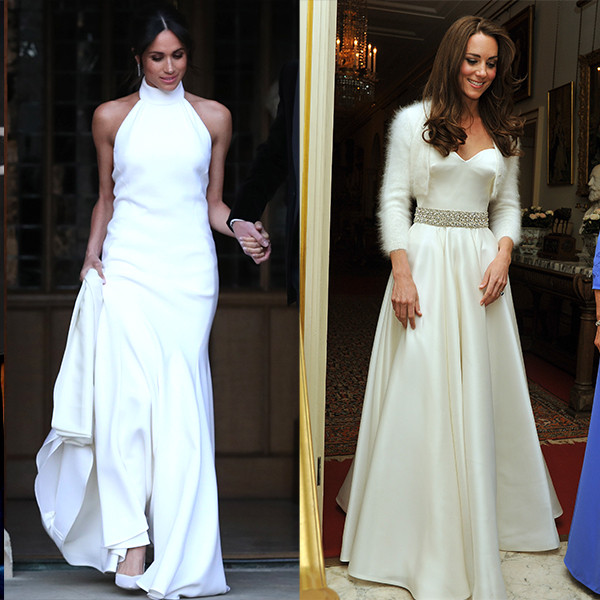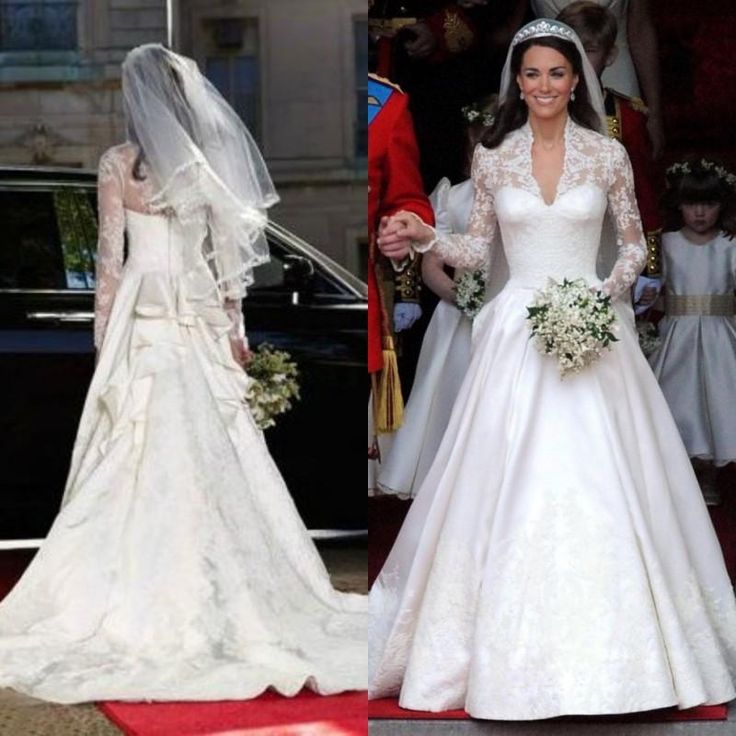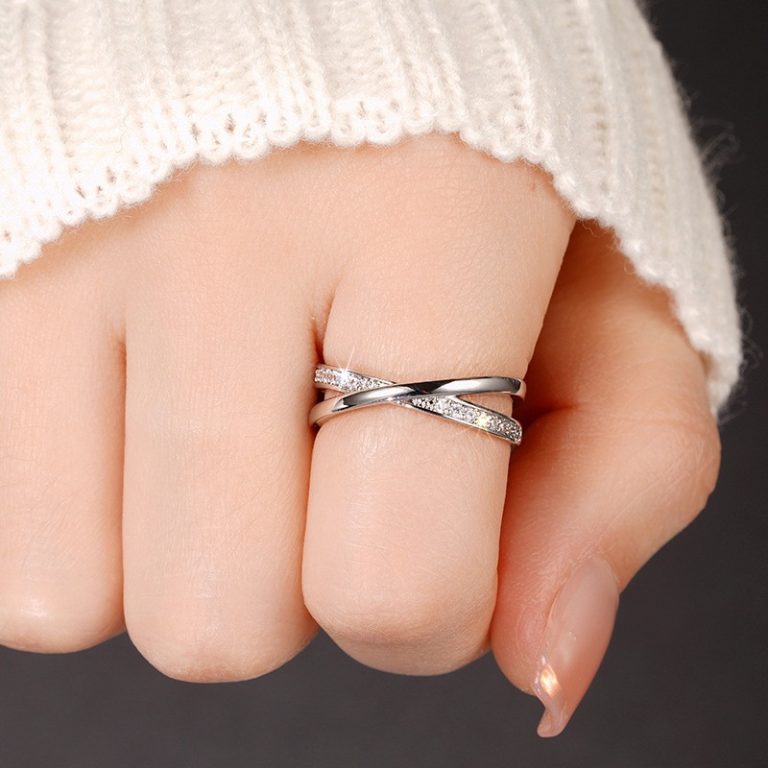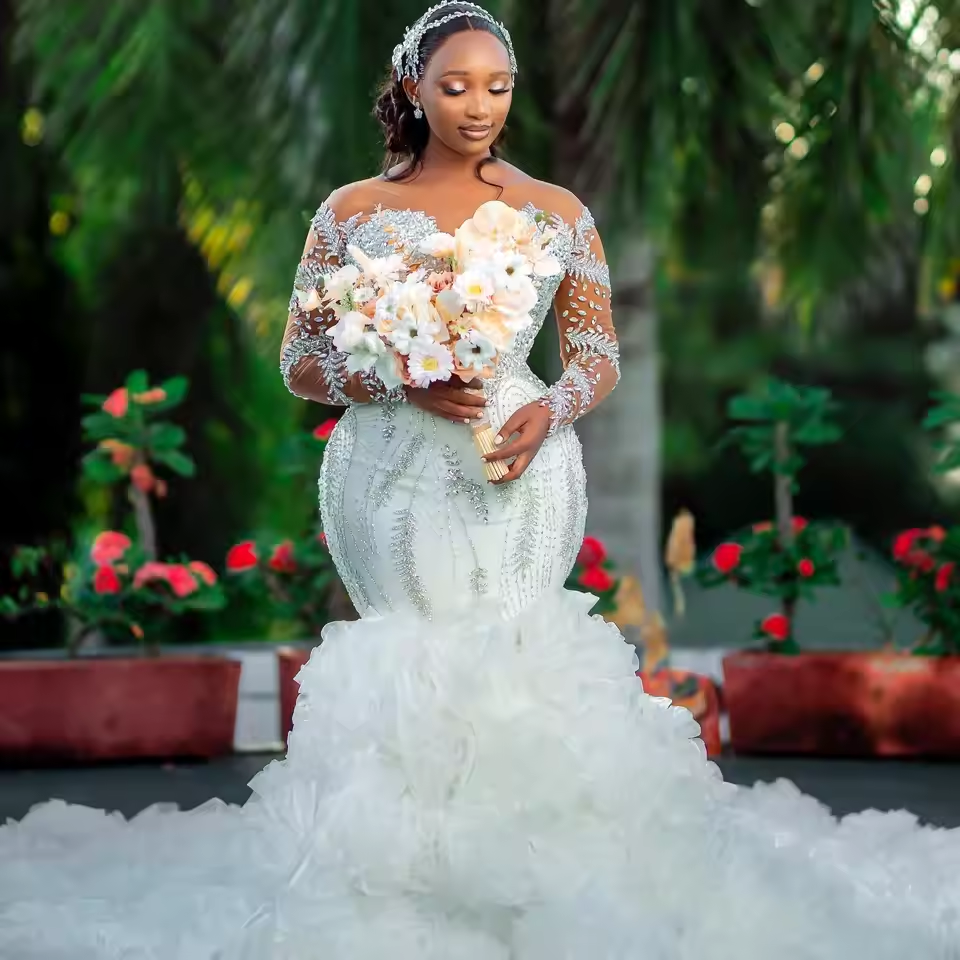The Royal Wedding: An Iconic Day
April 29, 2011, marked a day of celebration as Kate Middleton and Prince William tied the knot. The event was much more than a wedding; it was a global spectacle. Crowds flooded the streets of London, while millions tuned in worldwide to catch a glimpse of the day’s events. The royal wedding set trends, from fashion to florals, and everything in between.

The excitement mounted as Westminster Abbey’s doors opened to reveal Kate in her wedding dress. The ivory satin gown represented tradition and modern style, perfectly suiting the historic occasion. Every detail of the dress, from the delicate lace to the long, flowing train, captured the essence of a fairy-tale wedding. It was a dress fit for a future queen, exuding elegance and captivating onlookers.
Kate Middleton’s wedding dress became instantly iconic. It was a blend of time-honored royal bridal looks and contemporary fashion. Her choice of dress reflected her personal style while respecting royal customs. The anticipation and magic of the day continued to resonate as the couple rode through London in a horse-drawn carriage, waving to the adoring public.
The royal wedding is remembered not only for the union of Kate and William but also as a testament to British pageantry. The grandeur of the ceremony set a high bar for future royal weddings. Kate Middleton’s wedding dress, in particular, has left a lasting impression on bridal fashion around the world. Its influence and the memories of the iconic day continue to enchant to this day.
Design Elements of Kate Middleton’s Wedding Dress
When Kate Middleton stepped out in her wedding dress, the world took notice of every detail. The dress featured several key design elements that highlighted the artistry behind such a memorable piece of fashion. It integrated traditional motifs with a touch of modern elegance, demonstrating an understanding of royal expectations and contemporary tastes.
The gown was a vision in ivory and white, crafted from satin gazar with a bodice made from intricate lace produced by the Royal School of Needlework. The lace design incorporated the rose, thistle, daffodil, and shamrock – symbols of the United Kingdom’s four countries. The use of lace brought a delicate texture and depth to the dress that evoked a classic charm.
A standout feature was the dress’s train, stretching nearly nine feet long, that created a breathtaking silhouette as Kate walked down the aisle of Westminster Abbey. It struck a balance between grandeur and grace, a fitting statement for the future Duchess of Cambridge.
The dress clinched at the waist with a narrowed V-neckline, creating a subtle nod to Victorian corsetry without sacrificing comfort or modernity. Long lace sleeves added a touch of modesty to the gown while also embodying a timeless feature of royal wedding gowns.
Every element of Kate Middleton’s wedding dress, from the cut to the finishing touches, was designed with the intention to both honor royal tradition and make a personal fashion statement. Her dress secured its place in the history of royal weddings and became a style inspiration for brides globally. The keywords ‘Kate Middleton wedding dress‘ continue to spark interest and admiration for the dress’s impeccable design to this day.

The Designer Behind the Masterpiece
It was Sarah Burton, creative director of the luxury fashion house Alexander McQueen, who designed Kate Middleton’s wedding dress. Her work is known for combining the precision of tailoring with a strong sense of beauty. Burton took up the helm as head of the womenswear design team after Alexander McQueen’s passing in 2010. Within a year, she received the career-defining commission to design a royal wedding dress.
Burton’s dedication to detail and her respect for the McQueen brand’s aesthetics were evident. She worked closely with Kate Middleton to create a dress that would befit a future queen. Burton chose to honor tradition and infuse modernity in a seamless blend that would breathe life into the garment’s historic significance.
Under Burton’s guidance, the dress was made with meticulous attention to detail. The hand-cut English lace and French Chantilly lace were applied with care. An expert team from the Royal School of Needlework worked on the lace, ensuring the highest quality. They used the Carrickmacross lace-making technique, which dates back to the 1820s.
Sarah Burton’s achievement did not go unnoticed. Her design not only met the world’s expectations but also propelled her into a spotlight usually reserved for the most celebrated fashion designers. The ‘Kate Middleton wedding dress‘ remains a testament to her craftsmanship, acknowledged globally for its elegance and complexity.
Burton’s contribution to Kate’s wedding day, and to fashion history, is undeniable. She has crafted a dress that echoes through the annals of time as a perfect fusion of royal tradition and fashion-forward thinking. The keywords surrounding the dress reflect the admiration for her work and continue to inspire designers and brides alike.
The Influence of Kate’s Wedding Gown on Bridal Fashion
Kate Middleton’s wedding dress set lasting trends in bridal fashion. Designers and brides took note of the gown’s classic elegance mixed with modern details. The dress’s influence is visible today in several ways.
Firstly, the dress sparked a surge in lace gowns. The intricate lace work, highlighting British craftsmanship, became a key feature. Brides now often seek similar delicate lace detailing. The use of lace has become a staple, attributing a royal touch to modern wedding dresses.
Secondly, long sleeves saw a resurgence. Kate’s choice contrasted with the then-popular strapless dresses. Brides embraced this change, opting for sleeved gowns that offer elegance and coverage.
Thirdly, designers began creating dresses with a nod to traditional motifs. Kate’s incorporation of national symbols within the lace design inspired similar personalized touches. This has encouraged brides to include meaningful details in their own gowns.
Lastly, the balance of modesty and sophistication in Kate’s gown has become a benchmark. Brides want to feel regal yet accessible, reflecting Kate’s relatable royalty. The demand for gowns that mirror this sentiment has increased.
The term ‘Kate Middleton wedding dress’ remains hot in bridal salons. Brides ask for elements reminiscent of the duchess’s gown. The dress’s royal allure, fused with Sarah Burton’s craftsmanship, leaves a mark on bridal fashion that endures. As trends ebb and flow, the dress serves as a point of reference for timeless design.

The Evolution of Royal Wedding Dresses Before Kate Middleton
Royal wedding dresses have long set trends and caught global attention. Before Kate Middleton, each royal bride showed personal style while adhering to tradition. The evolution of these gowns over time reflects changes in fashion and societal norms.
In the early 20th century, Queen Mary’s wedding dress was rich with tradition, featuring a grand, heavily embroidered gown. The era’s fashion was all about opulence. Queen Elizabeth II’s dress, designed by Norman Hartnell in 1947, showcased post-war optimism. Made from ivory silk and decorated with crystals and 10,000 seed pearls, it symbolized hope and renewal.
Moving toward a more modern aesthetic, Princess Margaret in 1960 chose a simpler, high-waisted dress, a reflection of the streamlined silhouettes of the time. Designed by Norman Hartnell, this dress focused on an elegant shape without extensive embellishment.
Lady Diana Spencer’s 1981 wedding dress, created by David and Elizabeth Emanuel, made headlines for its dramatic style. The voluminous gown with its large puffed sleeves, cascading frills, and 25-foot train showcased the extravagance of the 80s. It stood in sharp contrast to the more understated elegance seen in Kate Middleton’s wedding dress decades later.
These historical gowns showed a pattern of adapting royal fashion to current trends. Each wedding dress not only followed royal protocol but also reflected the bride’s identity and the fashion zeitgeist. Kate Middleton’s wedding dress, with keyword ‘kate middleton wedding dress’, continued this tradition. It merged contemporary design elements with the storied history of royal weddings, influencing future bridal fashion with its perfect balance of past and present.
Public Reaction and Media Coverage of the Wedding Dress
The unveiling of Kate Middleton’s wedding dress sparked an immediate and widespread public reaction. As she made her entrance at Westminster Abbey, viewers around the world were captivated. Social media buzzed with excitement, and the dress quickly became a hot topic of conversation. People praised its classic elegance and modern design, lauding Sarah Burton’s creation. The blend of royalty and relatability struck a chord with the public, making the gown an instant favorite.
Media coverage of the dress was extensive, with major networks and fashion outlets providing minute-by-minute updates. The gown graced the covers of countless magazines and was the focus of numerous television segments. Analysts dissected every element, from the lace detailing to the significant train, showcasing the craftsmanship that went into the dress. Fashion experts weighed in on its impact on bridal trends and royal history. The search term ‘Kate Middleton wedding dress’ saw a surge in online searches, indicating the global interest.
Photographs of the dress circulated rapidly across the internet, allowing for even those who missed the live broadcast to partake in the phenomenon. Blogs and forums dedicated to royal style and wedding fashion exploded with posts discussing the dress. ‘Kate Middleton wedding dress’ became a symbol of the wedding and a key phrase for those looking to relive the moment or draw inspiration from the gown.
In the days following the wedding, the public’s fascination with the dress remained undiminished. Copycat designs appeared, showing the immediate influence of the dress. Bridal boutiques reported clients requesting gowns with similar features, proving the desire for the Kate Middleton magic. The media coverage and public reaction solidified the dress’s place in fashion history, as it embodied a moment where tradition met modernity with worldwide acclaim.
Legacy and Exhibitions of Kate Middleton’s Wedding Dress
The ‘Kate Middleton wedding dress’ is not just clothing. It is a piece of history. The gown stands as a monument to bridal elegance and has secured a place in the legacy of fashion. Its influence on wedding dress design remains strong. Designers still draw inspiration from its style, and brides wish to emulate its grace.
Royal exhibits have showcased the dress, drawing thousands of visitors. It first went on display in 2011 at Buckingham Palace. The exhibition offered a close-up view of the dress’s details and craftsmanship. The excitement surrounding it matched that of the wedding day.
These exhibits celebrate its design and the work of Sarah Burton for Alexander McQueen. They let fans relive the magic of the royal wedding. The ‘Kate Middleton wedding dress’ keyword still spikes in search trends during these events. It shows the lasting fascination with the dress.
The legacy of Kate’s wedding gown goes beyond fashion. It has become a symbol of a modern fairy tale. The dress represents a blend of tradition and modernity, a vision cherished and sought after by brides worldwide. In this way, it will continue to be honored and admired for many years to come.
Comparing Kate’s Dress with Meghan Markle’s Wedding Gown
The world watched as two royal weddings captured hearts and set trends. Kate Middleton’s dress in 2011 and Meghan Markle’s in 2018 both made fashion statements. Despite being royal gowns, they showcased unique styles and designs reflecting the brides’ personalities.
Kate’s gown featured lace and long sleeves, symbolizing classic elegance. Meghan’s dress, designed by Clare Waight Keller for Givenchy, was strikingly simple. It had a boat neck and three-quarter sleeves, creating a modern minimalist look. While Kate’s dress had intricate lace and a long train, Meghan’s was sleek with clean lines.
Both dresses were made with great care, involving exquisite craftsmanship. Yet, their difference lay in the details. Kate’s dress had symbols of the UK woven into the lace. Meghan’s had a veil with floral detail representing the 53 Commonwealth countries. This showed her commitment to her new roles within the monarchy.
Meghan’s gown did not have the same level of ornamentation as Kate’s. Instead, it relied on the structured fabric and her veil to make an impact. Both gowns followed royal tradition but also allowed for personal expression.
In bridal fashion, Kate’s dress caused a surge in lace and sleeved gowns. Meghan’s dress led to a rise in simple, elegant silhouettes. Both royal brides influenced designers and future trends. ‘Kate Middleton wedding dress’ remains a popular search, along with interest in Meghan’s choices.
These two iconic dresses show the evolution of royal wedding style. They brought together history, royalty, and modern fashion. The gowns from both weddings will continue to inspire brides for years to come.

